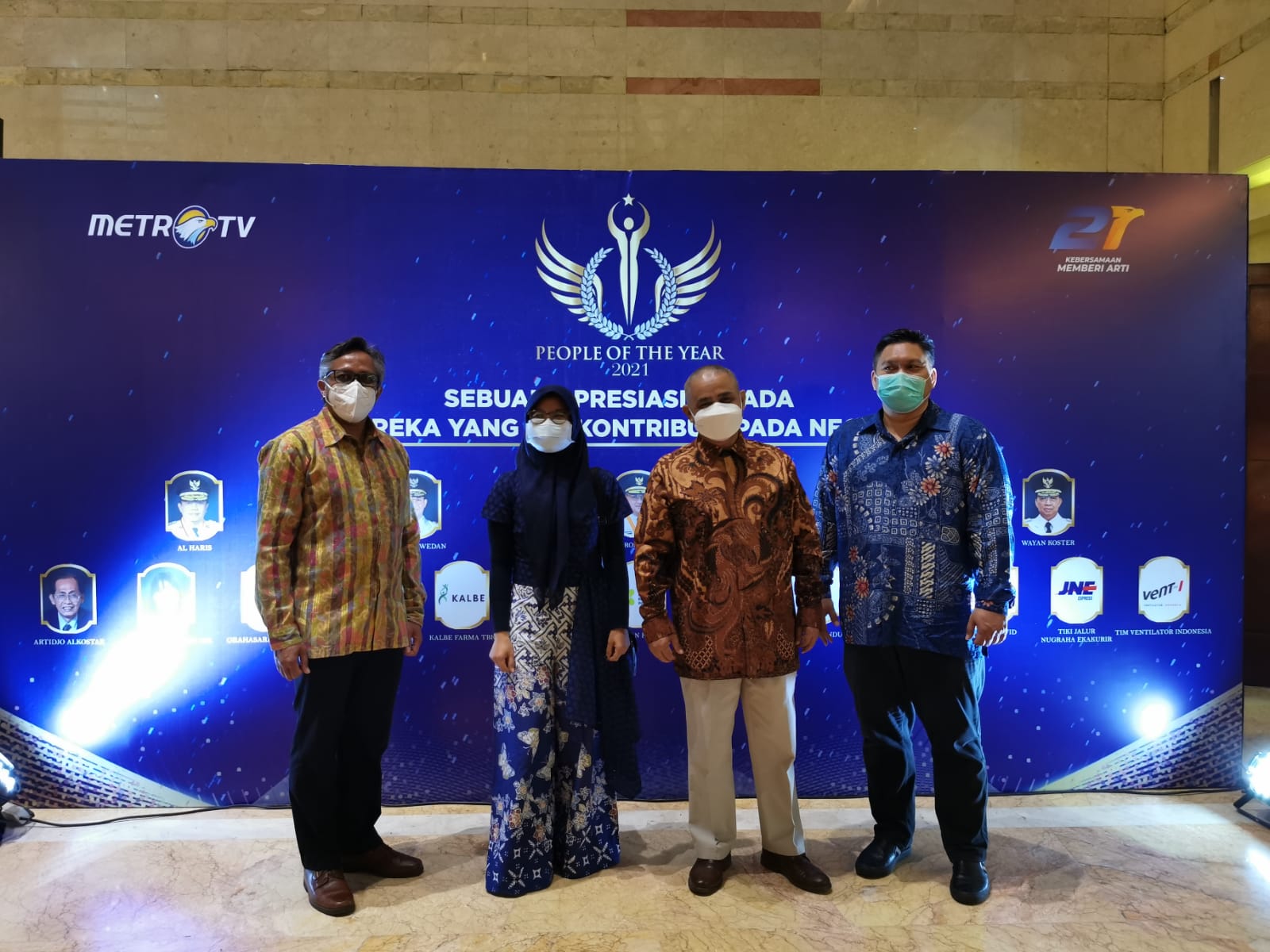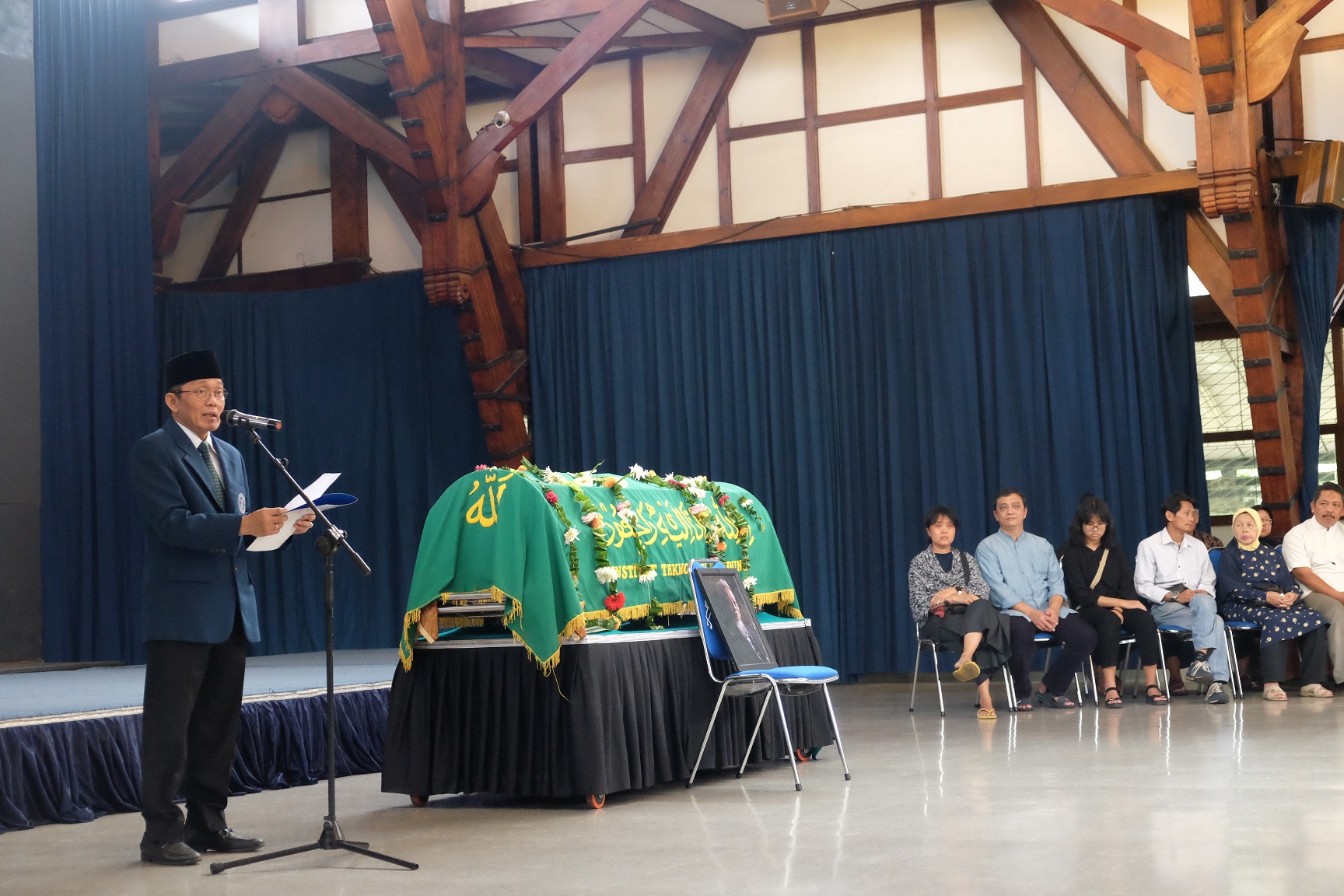Interactive Discussion About Waste Incineration with Prof. Enri Damanhuri
By Adi Permana
Editor Adi Permana

BANDUNG, itb.ac.id – The Solid and Hazardous Waste Laboratory in Institut Teknologi Bandung’s (ITB) Faculty of Civil and Environmental Engineering (FTSL) had organized an event called “Discussion of Waste Incinerator” with Prof. Dr. Ir. Enri Damanhuri, the laboratory’s senior researcher, on Saturday (10/4/2021).
This discussion took place from 09 00 to 12 00 WIB and talked about incinerator technology at a small, modular level. The topics presented also include its usual features and configurations, possible gaseous waste, and methods of reducing these gaseous products. The event is attended by more than 200 participants from various industries.
The discussion was led by Dr. I Made Wahyu Widyarsana, S.T., M.T., who was the Head of the Solid and Hazardous Laboratory of FTSL ITB. “Technology is a part of the waste management solution,” she mentioned in her opening speech. She stated this event aims to deliver the knowledge regarding incinerator technology.
In his commentary, Prof. Enri explained about the dilemma of waste management. The final disposal sites are often confusing to many as several locations are not visited by sanitary workers. The waste selection process has been done yet waste banks only accept plastic leftovers that have a high selling price. Waste disposal into rivers or by combustion is prohibited due to the formation of microplastics and dioxin compounds respectively.
Prof. Enri defined incineration as the oxidation of organic materials through combustion. There are three components in this process: fuel, oxygen, and heat from the lighted fire. “If either one of those is missing, combustion will not happen. I never stated that we should use the incinerator because its technology is efficient and eco-friendly,” he claimed.
He continued that if an organic medium is burned, dioxin compounds are formed, especially those containing chlorine. Based on a research, dioxin will be formed at 200-400oC; thus, the incinerator must be able to function above 400oC so that dioxin can only appear only at the beginning and the end of the combustion process.
There are many wastes from final disposal sites (TPA) that are burned in Indonesia. This activity is done daily to the point that some regions that schedule their cleaning and burning of waste. “A stall I visited in Tangerang practices the dismantlement of PCB. They use residual plastic as fuel and definitely produce dioxin due to the burning of PCB,” Enri stated.
In the present, modular technology has arrived and it is deemed better than uncontrolled waste burning. The incinerator operates above 850oC that is managed by tools capable of automatically turning on its burner. By doing so, the temperature can be maintained above 850oC. As mentioned before, this technology still brings a negative impact to the environment. “There has been no implemented technology that has zero impact,” he reminded.
The event went on actively with its feedback and discussion session coordinated by Ria Ismaria and Mahammad Fariz as the representative of the Group Waste Management of ITB Alumni, Environmental Engineering Alumni Association (IKTL) of ITB, and Environmental Engineering Vocational Board of the Indonesian Engineers Association (BKTL-PII). Together with the speakers and participants, there is much beneficial information that can be taken from the discussion.
Reporter: Amalia Wahyu Utami (TPB FTI, 2020)
Translator: Ruth Nathania (Teknik Lingkungan, 2019)

.jpg)
.jpg)
.jpg)
.jpg)
.jpg)


